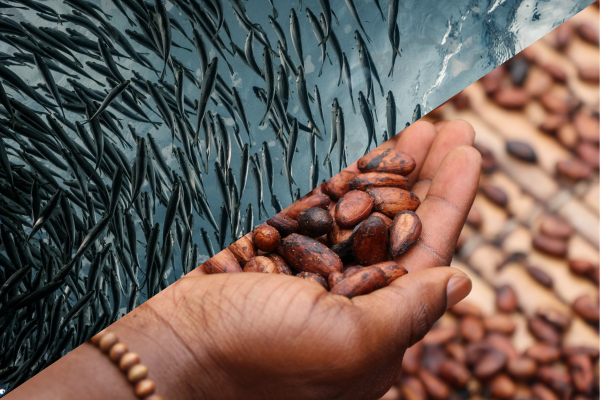Sourcing Models for a Changing World

What do fair-trade, organic Theo Chocolate and the global fast-food giant McDonald’s Filet-O-Fish® have in common? Shockingly, the answer is long-term, sustainable sourcing baked into their business models. (We didn’t believe it at first either).
“Since the 80’s, business has been very short-term focused,” said Kate Vitasek, Visiting Lecturer of Sourcing in the Master of Supply Chain Management program. “You’ve got a lot of companies who are deeply ingrained in the way they’ve always done business, which is to beat the crap out of suppliers.” New, long term ideologies rooted in vested partnerships, shared value, sustainability and social responsibility are taking root in companies large and small, from McDonald’s to Theo. The business world is being forced to reckon with itself.
Business is increasingly being seen as a driver of social, environmental and economic problems in the public eye. Trust and legitimacy are at an all time low. In an era of increased transparency and a public that demands accountability from the corporate world, this doesn’t bode well for the bottom line. “The reality is, if it isn’t good for society it isn’t good for business,” said Vitasek.
Theo chocolate takes that credo seriously. “This isn’t just about doing good or adding on social programs. We want to know which practices we need to engage in now to ensure we are robust in 20 years,” said Emily Benson, Supply Chain Impact Manager at Theo Chocolate. Social responsibility and sustainability aren’t add-ons for Theo; the concepts make up the backbone of their brand. They’ve established strategic partnerships with cocoa suppliers in the Congo, an area battered by civil war, low literacy rates and extreme malnutrition. Benson told us a story of a cocoa farmer she knew with five children, but said she only wanted three. When asked why she had five, the woman responded that she’d had one for sickness and one for the war. “That leaves me three.”
The chocolate commodity market has a huge amount of volatility. The farmers don’t do anything differently but the prices can change drastically. Theo consistently pays 2 to 3 times the market price for the beans they buy in order to support their farmers. Even then, the farmers’ living situation is still fraught with hardship, Benson told us. “We can’t solve this problem alone,” she said. Other companies use social responsibility programs to address the problems seen in farming communities in the Congo. “But that’s just to dodge the fact that prices that are too low to sustain people. We deal with externalities by paying a higher price now; it’s part of our enduring mission,” said Benson.
Socially responsible and sustainable sourcing models aren’t reserved for niche companies, however. “Bigger companies are thinking about this too,” Vitasek told us. It’s the corporations operating at a massive scale who are really in a position to push the needle. Vitasek cited McDonald’s move to use only Marine Stewardship Counsel (MSC) certified sustainable fish for their products. “Most people think, there’s no way. McDonald’s is terrible,” Vitasek said. But McDonald’s didn’t take the easy route. They could have decided to switch to established MSC certified suppliers, but instead, they worked with their existing suppliers to make the improvements needed to achieve an MSC certification. That decision resulted in more sustainable long-term supply of fish, maintenance of strategic relationships and a strong message sent to fisheries worldwide by one of the largest fish-buyers in the world. “If they continued the way they were going, soon they wouldn’t have any fish left to sell. They have to take the long-term view,” said Vitasek.
“At MSCM, we are teaching students to think strategically about the things companies buy and which sourcing models are appropriate in different situations,” said Vitasek. Students are taught a framework of attributes they can use to find the right sourcing model for any business. But you can rest assured, no matter what model you end up with, Vitasek’s teachings come with a long-term plan. “Laws are changing to look at best value, companies are becoming more conscious and consumers are demanding more transparency,” she told us. “Business evolves. This is a movement.”
Ready to jump in to a career in supply chain management? Check out the UW Foster School of Business Master of Supply Chain Management Program.
Written by Victoria Pinheiro, MSc.
MSCM Content Strategy Writer
[email protected]
